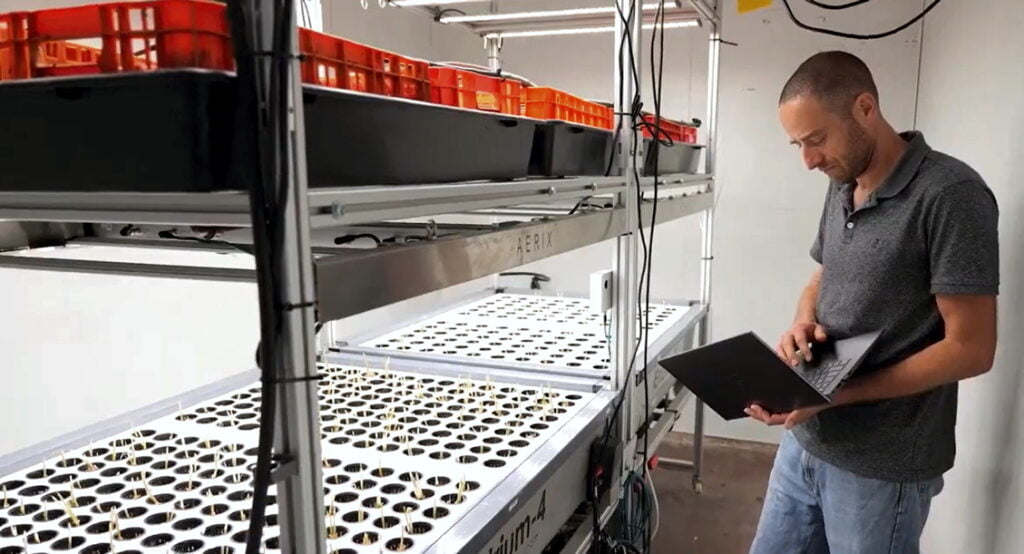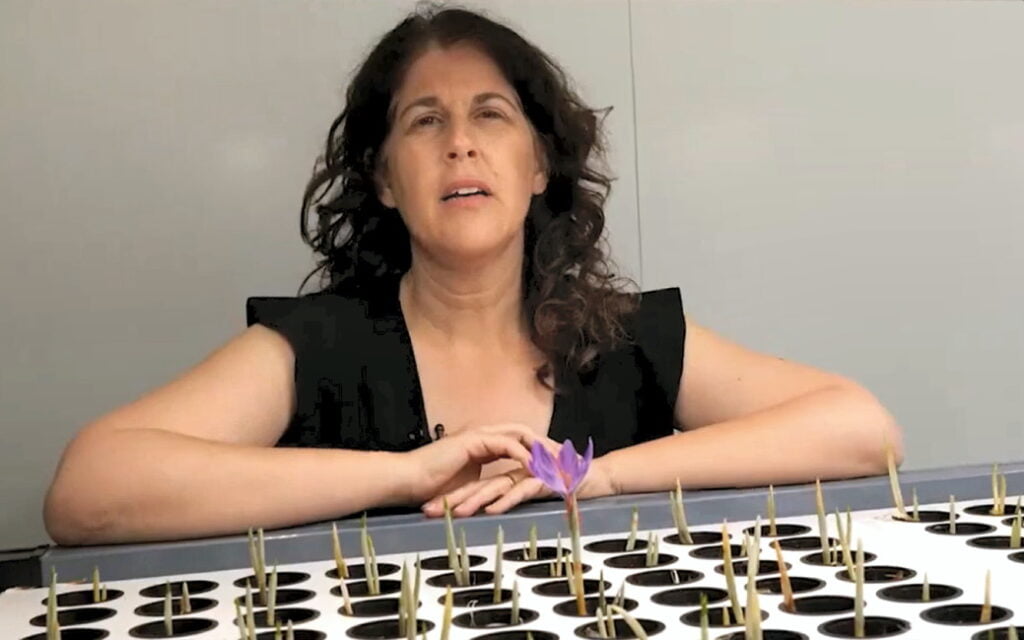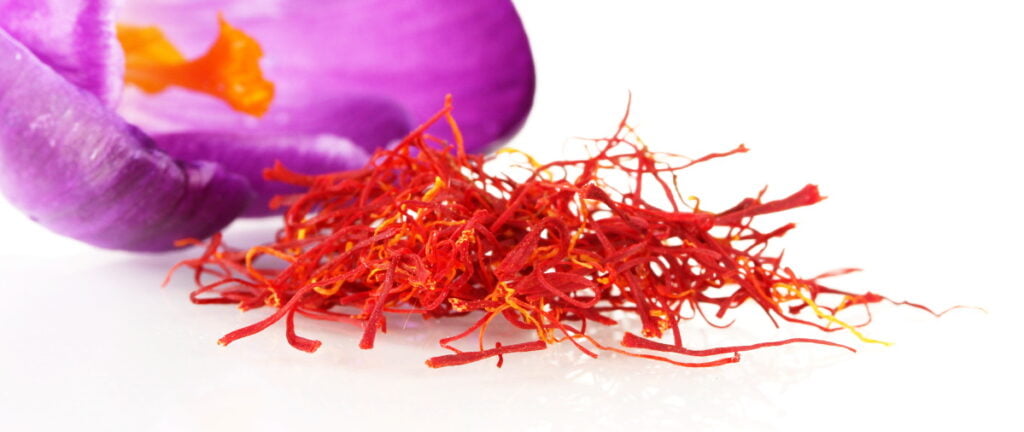AI method of growing saffron is 50 times more productive
It’s not hard to understand why saffron, the most prized of all spices, is called “red gold”.
It’s expensive. A single gram (0.03 ounce) of genuine, top-quality saffron will set you back $20. Compare that with a decent caviar at just $4 to $6 a gram, or a gram of actual gold which, at today’s price, costs $56.
An Israeli startup is about to disrupt the world’s saffron market with a revolutionary new method of cultivation.

It’s not promising to bring the price down overnight, but it does say it will be able, for the first time in the spice’s history, to provide a reliable supply chain.
The entire saffron industry is fraught with problems, for the farmers and the suppliers. There’s only one harvest a year – a three-week period in November and it’s extremely labor intensive.
Pickers harvest the flowers by hand and use tweezers to extract the three crimson threads or stigma from each flower. A hundred flowers – 300 stigmas – yield one gram of saffron. And if you want high-quality saffron, you need to harvest it early in the morning, when it flowers.
Eighty per cent is grown in Iran, and the supply chain is riddled with corruption. Fake saffron is masqueraded as real, real saffron is mixed with additives, saffron is smuggled in suitcases, money is laundered through saffron, in fact any crime linked to high-value goods is probably also linked to saffron.

Saffron-Tech, a startup founded in 2020, is transforming the way saffron is grown, and, possibly, the way it is traded.
Its team of expert agronomists have developed technology to produce four harvests a year, instead of one, and to grow the corms (that’s the correct term for a saffron bulb) indoors, rather than in open fields.
They use sophisticated vertical-farming methods, with layer above layer of the corms, in conditions where the temperature, humidity, and irrigation and are strictly regulated by artificial intelligence.
It’s the first significant change to the way saffron has been grown commercially in centuries, and is 50 times more productive than field cultivation.
“The main challenge is to take these corms and grow them indoors using indoor vertical farming,” says Tal Wilk-Glazer, the company’s newly-appointed CEO.
“By doing so, we resolve the issues around quality and around quantity, and we basically fix the supply chain.”

Around 70 per cent of the world’s saffron is used in kitchens, and 30 per cent for cosmetics and food supplements – to combat anxiety, depression, ADHD and other conditions.
But global production is stuck at around 20 tonnes a year. Compare that with, for example, garlic, at 28 million tonnes a year.
A whole array of possible uses for saffron have never been fully explored, not simply because of price, but because of unreliable supplies.
“The big players in the health industry don’t use saffron as a raw material because the absence of stable, good and reliable supply chain,” says Wilk-Glazer. Most of the saffron they’ll be growing will go health rather than food industries, she says.
“There are different qualities of saffron, different branding and different positioning. Saffron from a village in Switzerland can cost $100 per gram.
Sign up for our free weekly newsletter
Subscribe“Saffron from India or from Iran can be $7 a gram. The average price for high quality, authentic, not fraudulent, but real saffron is around $20 a gram.
“Gold is a bit more expensive these days. But to produce 1kg of saffron you need 100,000 flowers. That’s a lot of work.
“We are growing saffron in a controlled environment and everything is indoor. We manage to make the saffron understand that the year is progressing quicker than real time, so they flower four times a year.”
She won’t, understandably, delve into the detail of how they do it. “It’s the right recipe, a combination of external and physical conditions,” is all she’ll say.
They don’t use genetic modification. Rather, it’s “a combination of very deep agronomical knowledge and technology” that allows them, to manipulate the saffron corm.

Chief agronomist Tomer Ben Michael has been applying the knowledge acquired during his PhD on garlic to perfect the new method of cultivating saffron, and he’s been working alongside fellow experts in saffron and cannabis, as well as garlic.
The company is currently in research and development mode, growing 10,000 corms in total, and trying out 100 different subgroups within species crocus sativus.
It aims to start producing saffron commercially at Moshav Mavki’im, in southern Israel, close to Gaza, in 2023, and to scale things up in 2024. It also grows saffron using more traditional methods in the Golan, northern Israel, for control and comparison purposes.
“At the beginning, it will be easier to have the right customers and to compete on quality and the stability of the supply chain, not try to beat the price of the Iranian farmers,” says Wilk-Glazer.

“Growing indoor at the end of the day is expensive. The cost of electricity is high, and labor is very expensive. The first farm will focus on the health industry.
“The expectation, at least for the first two years, is not to reduce the price or to become the dominant player in the market. Today the market is around $1bn. It would be nice if we had five per cent of it in three or four years.”
She says once saffron production becomes stable, consumers, especially in the health sector, will become more concerned with the concentration of active ingredients – much as they have with cannabis.
“The game changer is the ability to provide large amounts of a stable, active high-end compound that’s very clean, with no fertilization. The expectation is not to break the market price but to increase the market.

“We spoke with many vertical farming companies that tried to grow saffron. It’s known for its high market value, so it’s very sexy for companies to try to grow, but they all reached the conclusion that it’s not economical, or it’s too hard.”
She acknowledges that other companies have had partial success with growing saffron indoors, but they use a hybrid method, flowering indoors and then putting them back outside in the field.
She said plans for the near future include developing a robot able to harvest the flowers and separate the all-important saffron stigmas. The company is currently crowdfunding through the Piplebiz platform
Related posts

Editors’ & Readers’ Choice: 10 Favorite NoCamels Articles

Forward Facing: What Does The Future Hold For Israeli High-Tech?

Impact Innovation: Israeli Startups That Could Shape Our Future




Facebook comments